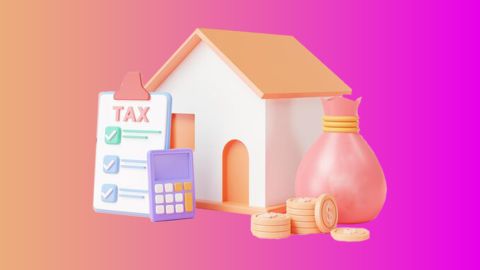Purchasing a home is one of the most significant financial decisions for many. While the process of securing a home loan might seem overwhelming, familiarising yourself with essential home loan terminologies can help you make informed decisions. Whether you are a first-time home buyer or looking to refinance, understanding these key terms will help you with the entire home loan process.
13 important home loan terminologies you should know before applying
1. Principal amount
The principal amount refers to the original sum of money borrowed from the lender to finance your home purchase. It is the base amount on which the interest and EMIs (Equated Monthly Instalments) are calculated.
2. Interest rate
The interest rate is the cost of borrowing money from the lender, indicated as a percentage. It determines the amount of interest you will pay over the loan tenure. Fixed rates and floating rates are the two common types of home loan interest rates offered by lenders.
- Fixed rates on home loan
A fixed rate comes with a constant interest rate throughout the loan tenure. This means your EMIs remain unchanged, providing predictability in your monthly repayments. - Floating rates on home loan
A floating rate of interest fluctuates based on market changes like a change in repo rate. As a result, your EMIs can vary during the loan tenure. When repo rates are low, your EMIs could reduce, but they rise too well when repo rates increase.
3. Equated Monthly Instalments (EMIs)
EMIs are the regular equal payments you make to the lender to repay the loan over the loan tenure. EMIs include both the principal amount and the interest.
4. Tenure
The loan tenure is the period within which you must repay the home loan. It is usually expressed in months or years. Opting for a longer tenure reduces the EMI amount but it may attract a high interest rate.
5. Down payment
The down payment is the initial amount you pay upfront when purchasing a home. It is a percentage of the property's value and the rest is financed through the home loan. A higher down payment reduces the loan amount and, in turn, the EMIs.
6. Pre-approved loan
A pre-approved loan is an offer from a lender stating the maximum loan amount you are eligible for based on your creditworthiness and financial standing. It helps streamline the home-buying process and strengthens your negotiation power with sellers.
7. Processing fee
The processing fee is a one-time charge levied by the lender to cover the costs of processing your loan application. It varies from one lender to another.
8. Amortisation schedule
An amortisation schedule is a detailed table that illustrates the repayment of your home loan over time. It provides a breakdown of each EMI into its interest and principal components, enabling you to track your repayment progress.
9. Prepayment and foreclosure
Prepayment refer to making additional payments towards your home loan principal before the tenure ends. Foreclosure, on the other hand, involves repaying the entire outstanding loan amount before the agreed-upon tenure. Some lenders may charge a penalty for prepayment or foreclosure, so it is essential to clarify these terms beforehand.
10. Credit score
Your credit score is a numerical representation of your creditworthiness. Lenders use it to assess your ability to repay the loan. A higher credit score enhances your chances of getting a favourable interest rate.
11. Loan-to-Value (LTV) ratio
The LTV ratio is the percentage of the property's value that the lender is willing to finance through the home loan. For instance, an 80% LTV ratio means the lender will finance 80% of the property's value and you need to make a 20% down payment.
12. Margin money
Margin money is another term for the down payment you need to make when purchasing a property. It is the difference between the home's cost and the loan amount sanctioned by the lender.
13. Balance transfer
A balance transfer allows you to move your home loan from one lender to another to benefit from better interest rates or loan terms. This is usually done to reduce the overall interest burden.
Being well versed with these essential home loan terminologies can help you with your home loan process as well as refinancing a home. Before committing to any home loan, thoroughly research the options available and compare interest rates, loan tenures and other terms.




